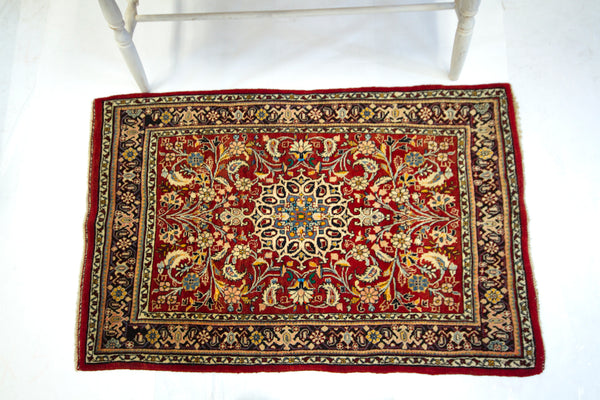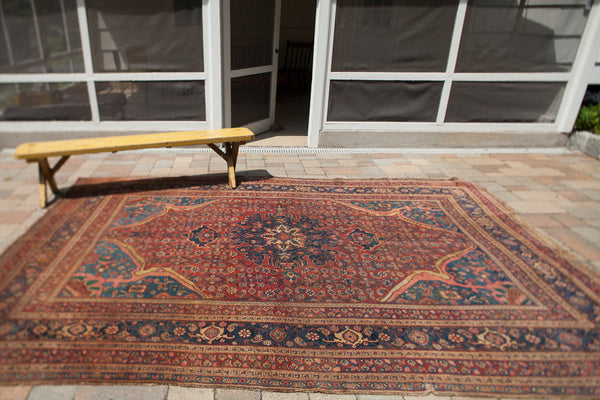Bijar is a city and capital of Bijar County, Kurdistan Iran. This and close surrounding areas of rug weaving are extremely well known for distinct technical characteristics and designs in Persian rugs. Often, carpets from Bijar are informally addressed as: Bijar, Kurdish Bijar, and Halvaei Bijar. These designations hint to the structural differences, and the variations which are often found to be characteristic of each. Bijar carpets often feature traditional main colors with spectacular, vibrant saturation and contrast.
Bijar carpets are well known for the hard-wearing wool, extremely dense weave, sturdy construction, knot density and durability compounded by hard packing of each row of knots. Often Bijar rugs made in the mid 1800's all the way through today are found to have a more substantial construction and tightly woven. At times caution should be taken in folding and rolling a Bijar like other other rugs due to the rigidity. Still, the traditional Bijar carpet is considered among the most enduring of Persian rugs: among the rug community many nickname Bijars "the iron rug" due to the reliable longevity. Bijar carpets, like many Oriental rugs, often last for many generations; the difference being Bijars often are found to endure great traffic. Many Pre-WWI Bijars are woven with wool pile and wool foundation. Post 1920 Bijar rugs transition into the more common wool pile and cotton foundation.
Bijars noted as Kurdish Bijars often follow a style of weave more closely related to a village weave. Comparatively, such carpets will be thinner, slightly looser in weave, and commonly the foundation is found to be wool for a longer period of time than most traditional Bijar rugs.
Halvaei Bijar is often a reference to a finer quality or grade Bijar with tighter knotting, higher level of expertise, and a more supple construction where weavers may opt for a wool weft as opposed to cotton.
Common designs:
Gul Farang Bijar - A spiraling rose design often repeated across the field,
Herati Bijar - A repeating motif of the "mahi-mahi" design. At times, a contrasting field color is used to simulate diamond medallions in the background.
Gerrus Bijar - Reciprocating arabesques
Garden of Paradise Bijar - Four seasons design often featuring cypress trees),
Triclinium Bijar - A motif containing sectioned areas of singular carpet designs parallel, with one carpet design perpendicular atop, said to simulate the desired orientation of carpets in the home of Eastern décor.
We consistently carry Bijar carpets of what we consider to fit one or more of the following criteria 1. highly decorative 2. transitional pieces 3. Interesting or unusual examples with unique flavor 4. exceptional carpets in color or design.
Here are a few current Bijar carpets in the Old New House shop, Enjoy!

Beautiful mid-century floral Persian Bijar.

Transitional Antique Persian Kurdish Bijar with unusual arabesque border. Herati center field design.

Antique Kurdish Bijar circa late 19th century. Simplified Gerrus field design. SOLD

Antique Persian Bijar, fourth quarter 19th century. Herati center field with Laleh Abassi minor border.

Antique Persian Bijar, second half, 19th century. Allover Herati design with arabesque corner spandrels. Fine, vivid colors.
Thanks!
Old New House










